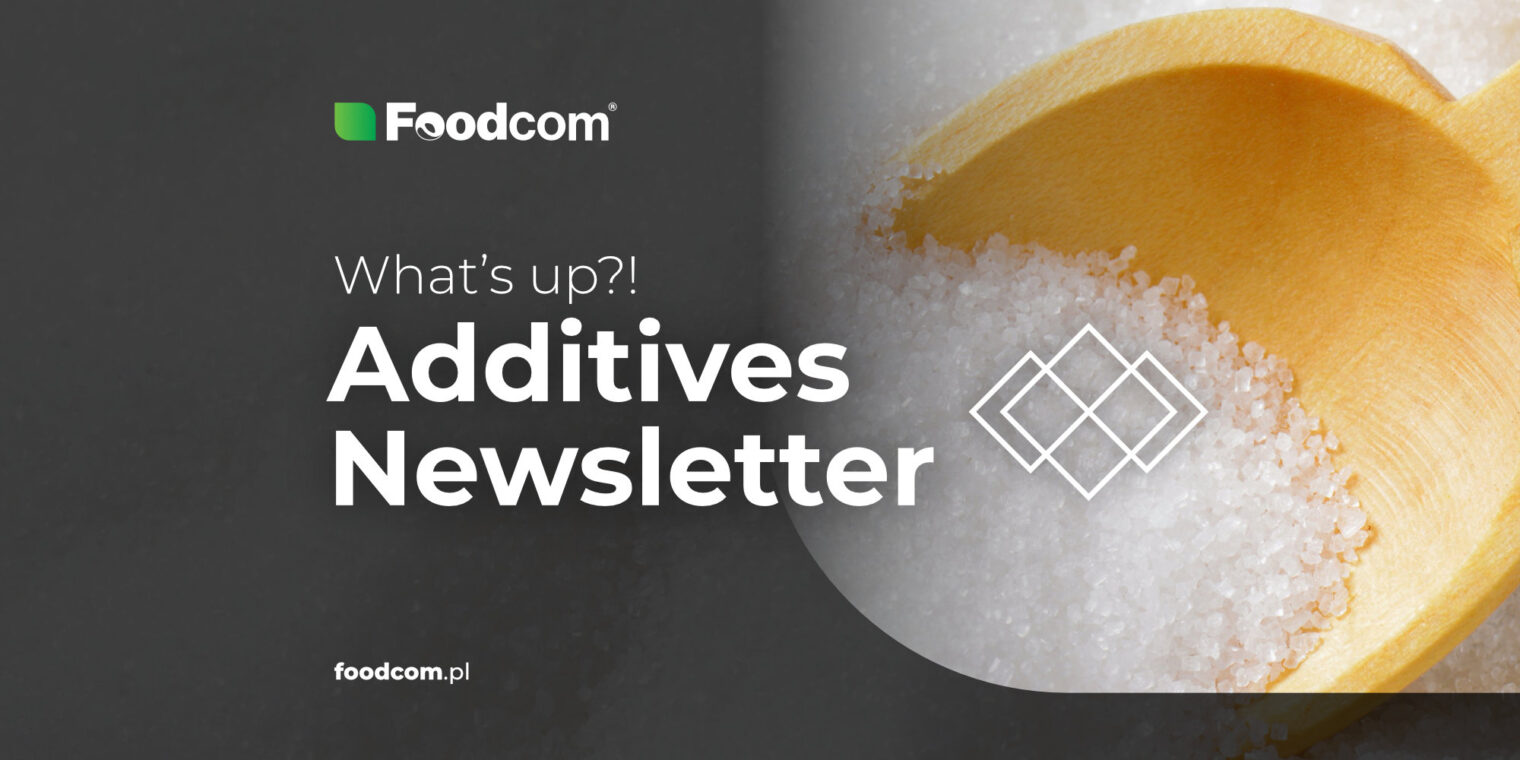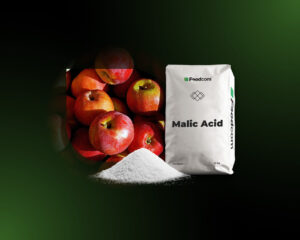All the best for us! You may ask what reason is there to celebrate? Almost exactly one year ago, the first edition of your favorite Foodcom Additives Newsletter landed in your mailboxes. What a year that was, right?
In a departure from this celebratory atmosphere, we have prepared for you, as in every issue, an overview of the most important events and everything you need to know about the additives market. Many consumers, growers and processors are currently most concerned about the ongoing avian flu epidemic, which is taking its toll on bird populations, egg prices and the availability of eggs on store shelves in general. Not an egg-cellent time, that’s for sure.
Vitamin C
The center of events related to changes in the Vitamin C market continues to be China. Disease outbreaks that occurred after the relaxation of restrictions related to the COVID-19 pandemic are affecting production continuity in selected factories. At the same time, demand for dietary supplements and medicines containing the vitamin is increasing due to the ongoing disease season. A similar trend is likely to continue in the coming weeks.
Citric Acid
Asia-Pacific accounted for the largest share of Citric Acid sales in 2021. This trend is continuing, and experts predict that it will continue in the coming years. The reasons are the relatively low production costs and the good availability of raw materials in this region. The overall growth of the market for this raw material is driven primarily by the increasing applications in the food, pharmaceutical and metallurgical industries.
Xanthan Gum
The price of Xanthan Gum has decreased slightly recently. The decline was not significant, but still noticeable. The raw material is still in high demand among food manufacturers, mainly because of its thickening, stabilizing and texture-enhancing properties. There are also inquiries from representatives of the cosmetics and pharmaceutical industries.
Lysine HCL
Another commodity whose price has fallen somewhat recently. Nevertheless, long-term forecasts remain optimistic, and the market is expected to grow in the coming years.
Ferric Chloride 40%
Increasingly stringent standards for wastewater treatment and water purification suggest that the demand for Ferric Chloride 40% will increase in the coming years. It is also used in the manufacture of selected electrical systems, another dynamically growing industry. One player whose actions should be watched closely is definitely China – but we probably all know that already.
What else?
Europe
French beet producers unhappy with the EU decision
Following the heavy losses suffered by French farmers from plant diseases in 2020, the government has decided to exempt the use of neonicotinoid chemicals, which are considered harmful to bees, from a blanket ban. The plan was to extend the exemption for another year, but the Court of Justice of the European Union has ruled that member states cannot grant such exemptions. Farmers are even more outraged that the decision was made just weeks before this year’s sowing season. Not very sweet news, right? Well, maybe a little for the bees…
The British government allows the use of a pesticide banned by the European Union
Yes, from the same group we wrote about above. The difference is that the British government has approved the use of thiamethoxam, a substance from the neonicotinoid group, for the third year in a row. One may wonder if this is the main reason why they have left the European Union…
Germany considers phasing out crop biofuels by 2030
The German government is seriously considering phasing out the use of biofuels made from food or feed crops by 2030. Instead, the use of biofuels from garbage, waste, and used cooking oil would increase. Proponents of this change argue that food is too valuable to use for fuel. It’s hard to disagree with that.
The Americas
Finally, some good news from the world of fertilizers!
The results of a Washington State University study indicate that sustainable methods of producing synthetic ammonia, which is then used to make fertilizer, can be cost-competitive with current fossil fuel-based methods. If these innovative methods become widespread, it will reduce carbon emissions and increase market stability in an industry that is critical to food production. Long story short, what we have here is innovation, environmental protection, optimization of fertilizer production and combating the food crisis. What more could you ask for?
BP Bunge will phase out the use of mineral fertilizers by 2025
The company recently announced that it will stop using mineral fertilizers on its sugarcane fields by 2025. They will be replaced with organic alternatives. The decision was motivated primarily by rising global prices for mineral fertilizers. From this perspective, it is hardly surprising.
Fufeng USA begins construction of an amino acid plant in North Dakota
The factory, construction of which has just begun, will eventually produce lysine and threonine, primarily for the North American market. When fully operational, the plant is expected to have more than 200 full-time employees. Will the new plant change the situation in the Lysine and Threonine market? Time will tell.
Asia & Oceania
India plans to buy 1.7 million tons of fertilizer from Morocco in 2023
Moroccan phosphate and fertilizer producer OCP said it plans to supply India with 1.7 million tons of phosphate fertilizer in 2023. According to recently signed contracts, Morocco’s OCP will supply India with 700,000 tons of nitrogen-free fertilizer known as triple superphosphate (TSP), in addition to 1 million tons of diammonium phosphate (DAP). That cannot be called retail, that’s for sure.
South Korean supplier Daesang discontinues production of Lysine HCl for Q1 2023
Production of Lysine HCl at Daesang’s Gunsan plant in South Korea has been temporarily halted and is expected to resume in the second quarter of this year. The reason for this decision is the current relatively low price of Lysine HCL and intense competition from Chinese suppliers. At the same time, production of liquid lysine at the plant continues without interruption.
Indian industry is turning to biomass
However, this decision does not come naturally – New Delhi has begun enforcing a ban on coal burning. The goal of the restrictions is to reduce air pollution, which the capital region struggles with every year. In addition, biomass is slightly cheaper than coal. The change already seems to have an effect, the air has become cleaner, but we still have to wait for exact calculations.







